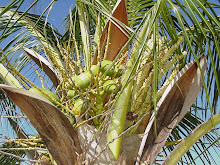The Colonel and I were now beginning our descent into the heart of Kentucky's "Boone Country". We had left Daniel and Rebecca Boone's mortal remains behind us and were making our way to parts of Kentucky that still vibrated with the energies of the Boone legacy.
Our next stop was at Blue Licks Battlefield State Park.
The Battle at Blue Licks is considered the last battle of the American Revolutionary War. It took place ten months after Lord Cornwallis surrendered at Yorktown, Virginia.
On August 15, 1782, Shawnee Indians, under the orders of British Captain William Caldwell and with the help of Simon Girty (a liaison between the British and their Indian allies), planned a surprise attack on Bryan Station, an early fortified settlement near Lexington, Kentucky, established 1775-76 by four Bryan brothers from North Carolina. The defenders of the station learned of the attack beforehand and were ready to repel the Indians.
The women of the station were asked to go outside of the stockade walls to get water from the spring nearby. These very brave women were to act like it was a normal day and pretend that they knew nothing of the Indians who were watching them from the woods. The Shawnee had no reservations when it came to killing women and children.
The Heroines of Bryan Station Fort
Original watercolor by Emily Utterf,
Bryan Station Chapter Member
The women were able to fill their water buckets and return within the safety of the walls of Bryan Station.
For two days the Shawnee attacked the station. They killed five white settlers and wounded two more before retreating toward the Ohio River.
Upon hearing of the attack on Bryan Station, Kentucky pioneers, Daniel Boone and his son Israel among them, were inclined to pursuing the enemy. Daniel Boone was in favor of waiting for reinforcements before beginning the pursuit.
On August 19, 1782, although under the general leadership of Major John Todd, Major Hugh McGary, eager to prove he was no coward, urged immediate pursuit and attack of the enemy. When no one heeded him, he mounted his horse and rode across the ford and yelled, "Them that aint cowards follow me." The men followed, as did the officers, who hoped to restore order. Daniel Boone was suspicious of the obvious trail left by the Indians thinking it would lead them into an ambush. Boone remarked, "We are all slaughtered men," and crossed the river.
The Kentucky pioneers suffered a bitter defeat and were routed by their Revolutionary War enemies. Captain Caldwell concealed his British and Indian army along the ravines leading from the hilltop to the Licking River. Advancing into this ambush, the pioneers were out-numbered and forced to flee across the river. Daniel Boone's 23 year-old son, Israel, was shot in the neck and killed during the retreat. Sixty of the 176 men who followed McGary were killed and another seven were captured. Reinforcements under George Rogers Clark (my buddy comes through once again) eventually arrived and drove Caldwell's forces from Kentucky for good.
At the Blue Licks Battlefield State Park is an impressive monument that honors those who fought and/or died during the battle.
The Colonel and I walked down the stone steps that lead to the monument. Along the way there was a little raised bed of soil. It is here that the martyrs of the last battle of the American Revolution are buried.
We continued down the steps to the tall monument.
The monument was engraved with the names of those who bravely fought in the battle.
"Enough of honour cannot be paid" - Daniel Boone
There was a fireplace ruin on the grounds of the state park. It was set upon a hilltop.
An historic marker nearby informed us that these were what remained of the home and grave (we never did see where that was) of Major George M. Bedinger (1756-1843). He was an officer in the American Revolutionary War in defense of Boonesborough in 1779 and at the siege of Yorktown in 1781. He came to Kentucky in 1784, first to survey the area and to fight in the Indian campaign in 1791. Major Bedinger was a Kentucky legislator (1792-94), and a U.S. congressman (1803-07). He opposed slavery and freed his slaves when they turned 30 years old (seems a bit long to keep your slaves in bondage especially when you claim you are against slavery...just saying).
The Blue Licks Battlefield State Park is home to a 15-acre state nature preserve. It contains a cedar glade that was previously an open area that was once used by a large number of herbivores such as Bison, Elk and even Woolly Mammoths. Today the glade is a forest that is home to the federally endangered Short's Goldenrod and the state threatened Great Plains Ladies'-Tresses (images from the Internet).
The Colonel and I did not see these plants while we were at the park (due to poor website content as we researched for our trip, as well as very poor signage and the lack of an available ranger within the park).
We had much more to see and do in Kentucky, so we got back into our car and began to make our way towards Lexington and more Boone history.



















































No comments:
Post a Comment